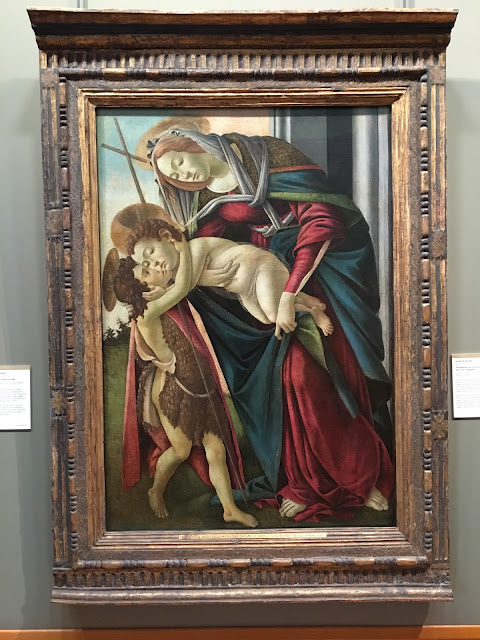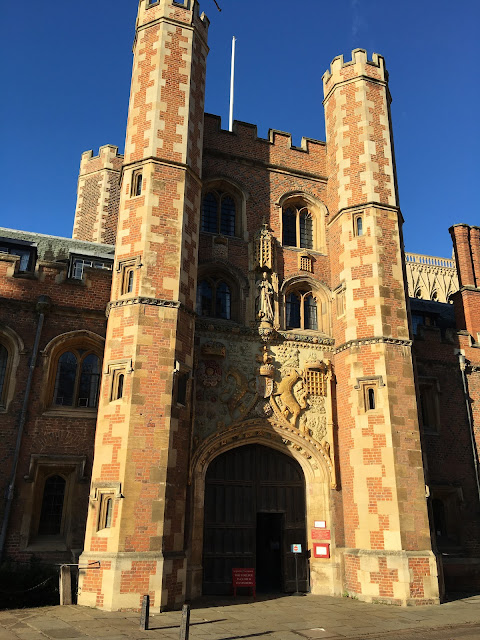Today something far removed from yesterday's towering painting. We are back to the Fitzwilliam collection and back in the pre-modern and the Gothic. That slightly strange, to Northern eyes at least, Gothic of the Italian peninsular, where the Gothic north blends with strong and persistent Classical, Romanesque and, most important in the discussion of this painting, Byzantine traditions.
What we are looking at here is essentially an icon set within a tabernacle - everything we see is constructed of gessoed, painted and gilded wood. According to the Fitzwilliam museum it dates from after 1440; the work of Paolo Schiavo. It is Florentine, but at some point the tabernacle turned up in Pisa. By 1883 it is known to have been in the collection of the Pisan Giuseppe Tuscanelli. The tabernacle is a devotional object, but not for personal, private use, but for the use of a lay devotional community - in this case a group of flagellants. In one sense it is a variant of the 'Madonna enthroned' I talked about on Wednesday; the Theotokos and the Christ child are still surrounded by a heavenly court - there are angels in the soffit of the arch, and saints on the piers 'supporting' the arch, four in all. The variation is simply that the Theotokos is seated on the ground; hence the title 'The Virgin of Humility'. A fitting subject for such a confraternity, which is depicted in the panel below the main panel performing the funeral rite of one of its members.
Finally I suppose I ought to say something about these flagellants. All we need to know is that in the Middle Ages confraternities were very popular, loci of popular lay devotion. Some very famous Medieval paintings, such as the Rucellai Madonna* by Duccio were commissioned by such confraternities. The flagellants were simply a more 'extreme' example of such devotional life. They seem to have been a product of the Later, post Black Death, Middle Ages.
* The Rucellai Madonna was commission by the Laudesi confraternity. They met within the 's' transept of Dominican church of Santa Maria Novella, where they had a chapel. It has often been said that the painting - tempera on wood - was an altarpiece. I don't think that that is accepted these days. The image - which is extremely large and is essentially, like 'The Virgin of Humility' an icon, though of the 'Panakranta' type - may either have stood in the confraternity's chapel or outside in the transept. After the completion of the nave it may have been moved there, to stand either against one of the piers or upon the rood beam, what in the Italian peninsular was then referred to as the 'Iconostasis' (see: 'The Art and Science of the Church Screen in Medieval Europe', Eds: Spike Bucklow, Richard Marks, & Lucy Wrapson). The Iconostasis in the Upper Church at Assisi not only supported (centrally) a Crucifix, but icons of St Michael and the Virgin Mary & Christ child of the 'Panakranta' type - the beam is depicted in Giotto's fresco 'The Verification of the Stigmata'.
When Vasari ruthlessly remodelled the interior of Santa Maria Novella during the Counter-Reformation (the amount of destruction was quite the equal to that done by Protestants) the image was placed in the Rucellai chapel off the 's' transept. Hence its current name. It was moved out of the church in 1937 and on to display in Uffizi in 1948 (wiki says it was moved to the Uffizi in the 19th century), and denuded of its power thereby. (image from wiki Commons)
















